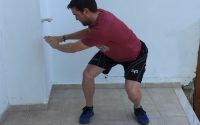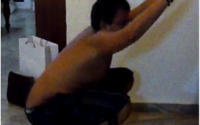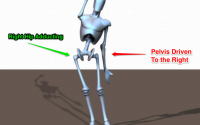The Bullies and the Bullied
Having talked about the thoracic and stiff hips in cycling recently, it got me thinking about the bullies and the bullied of the body. I usually don’t like to generalise too much, however, there are definitely areas of the body that hold a lot of power and areas that are more prone to suffering symptoms. The Bullies of the body are the hips, feet and thoracic spine. It was Gary Gray who I first heard talk about this. When I’m treating patients it is this explanation that I give as to why they have knee pain (for example) but I am working on their feet/hips.
As I see it the bullies are the:
- Hips
- Feet
- Thoracic Spine
and the bullied are the:
- Knees
- Lumbar Spine
- Cervical Spine
- Shoulder
Today, we will take a look the bullies and then later in the week we will look at the areas of the body that are bullied.
The Bullies
The Hips
I think the hips are bullies for a few reasons. One reason is because of the stability of the joint, it has a huge amount of bony and ligamentous stability as well as a huge amount of muscular power. This means its quite tough to bully the hips and not only that it makes it relatively easy for the hips to compensate and ‘absorb’ problems caused elsewhere in the body with no immediate problems.
This ability to compensate is a brilliant thing initially, it means we can carry on functioning at a high level even when things aren’t perfect. However, if these compensations build up and more and more is asked of the hips a break down in performance is likely and often an injury results. However, because of the stability and power of the hips the injury often doesn’t occur at the hips themselves. It’s far more likely that the symptoms will appear elsewhere in the body.
The Feet
The feet hold a vast amount of power. They are the body part that makes contact with the floor, so it is the feet that decide what motions are fed into the body further up the chain. If the feet go through the ‘correct’ motions, at the correct time, at the correct speeds success further up the kinetic chain is far more likely. If there is a limitation in the foot movement it is setting up the rest of the chain and forcing the more proximal structures to compensate.
Another reason the feet are so powerful is because they are so ‘stubborn’. This stubbornness is a great thing when all is well. The feet get smacked into the ground repeatedly under high loads, if they weren’t stubborn, they would break down far too easily. However, when dysfunction has set in, this stubbornness means they can be very tricky to ‘convince’ to change their ways. It can certainly be done, but can be hard work. In cases where the foot structure cannot be changed, we can use an orthotic, which for me is aimed at minimising the dysfunction the feet pass up the chain. If you can help the feet feed the correct motions into the body, successful movement is far more likely.
The Thoracic Spine
We spoke recently about the power of the thoracic spine. It again can be hugely influential on the movement of the body. I think the thoracic spine is powerful because the body can limit it’s motion in the sagittal plane very quickly, and this has a profound on the frontal and transverse plane motion in the thoracic. Fyettes laws of spinal motion say that if you take up motion in one plane it will limit the motion available in the other two planes. So when you have an injury anywhere in the body, you tend to see a pattern whereby the person goes into an increased thoracic kyphosis. As a result there will be less lateral flexion or rotation available.
You can see this in action, next time you see a sportsman sprain their ankle you will immediately see them lock down the thoracic in the sagittal plane. If repeated or chronic injuries occur this lockdown of the thoracic can become more prominent and the dysfunction more prolonged.
Summary
These bullies all hold large amounts of power, they are powerful for different reasons, but this power causes them to dominate over other areas of the body. Though injuries can occur anywhere in the body the prevalence of injuries in the bullies is far less than the number that occur in the bullied areas of the body. Though this ‘theory’ holds true in almost all cases I can think of, it is particularly the case in chronic over-use type injuries. That is why it is so important to hunt down the root cause of any dysfunction rather than just treat the symptoms.
Physioblogger


